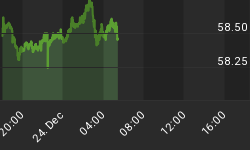Negative real interest rates show no signs of going away...
After months of "quanticipation", the Federal Reserve has finally done it. Ben Bernanke yesterday announced another round of asset purchases.
The much-vaunted third round of quantitative easing (QE3) is now a reality. And this time it's permanent (or, at least, open-ended).
First, let's get the details out of the way:
- The Fed will buy $40 billion of mortgage-backed securities per month. This policy will continue indefinitely, depending on the state of the economy.
- The Fed will continue Operation Twist, aimed at lowering longer-term Treasury yields, until the end of the year, while also continue its policy of rolling over maturing mortgage-backed securities. As a result, Fed asset purchases will total around $85 per month between now and the end of the year.
- Fed policymakers extended their guidance for near zero policy rates to at least mid-2015
As you might expect, gold rallied following the announcement. Euro gold prices set a new all-time high above €1359 an ounce at this morning's London gold fix. In Dollar terms though, gold didn't quite reach this year's high seen back in February.
Beyond the headline numbers, though, what have we learned from yesterday's announcement?
Well, for one, yesterday's move shows Fed policymakers have serious concerns about the state of the US economy, specifically centered around unemployment. Bernanke said the Fed will continue asset purchases until it sees "ongoing sustained improvement in the labor market".
"There is not a specific number we have in mind," Bernanke told reporters, "but what we've seen in the last six months isn't it."
Another thing we learned is that the Fed is treating its 2% inflation target as symmetric, as the Bank of England does, rather than as an upper limit in the style of the European Central Bank.
"Strains in global financial markets continue to pose significant downside risks to the economic outlook," yesterday's Federal Open Market Committee statement said.
"The Committee also anticipates that inflation over the medium term likely would run at or below its 2 percent objective."
This is straight out of the Bank of England playbook. The BoE has repeatedly warned of the risks that inflation could fall below target "over the medium term", using this argument to justify extensions to its own QE policy even with inflation resolutely above target.
In his New York Times column, Paul Krugman has hailed yesterday's announcement as the Fed trying "to credibly promise to be irresponsible" as a way of raising inflation expectations - something he advocated for Japan back in the 1990s.
Assuming that is the Fed's aim, it could prove a dangerous miscalculation. Expectations of higher inflation, once they take hold, are very difficult to dislodge. Be careful what you wish for, and all that.
Nonetheless, one other thing we've learned is that negative real interest rates are likely to be with us for a good while yet. The Fed pretty much said so: it expects policy rates to stay near zero for at least three years, while at the same time viewing a fall in inflation below 2% as something best avoided.
This is bad news for those with money in the bank, who have seen interest on their savings fail to keep up with inflation for several years now. This unlikely to change over the much-vaunted "medium term".
We are reminded of that famous quotation from Keynes: "The long run is a misleading guide to current affairs. In the long run we are all dead."
That may be so, but it looks like in the medium term we'll all be broke.
Getting back to gold, recent developments suggest the environment that saw gold gain more than six-fold in a decade is still very much with us: negative real rates and rising global liquidity. Last week, the European Central Bank announced it will purchase bonds "with no ex ante limit". Yesterday, the Fed - guardian of the world's reserve currency - joined them in making a similar open-ended commitment.
The tide looks far from turning...















